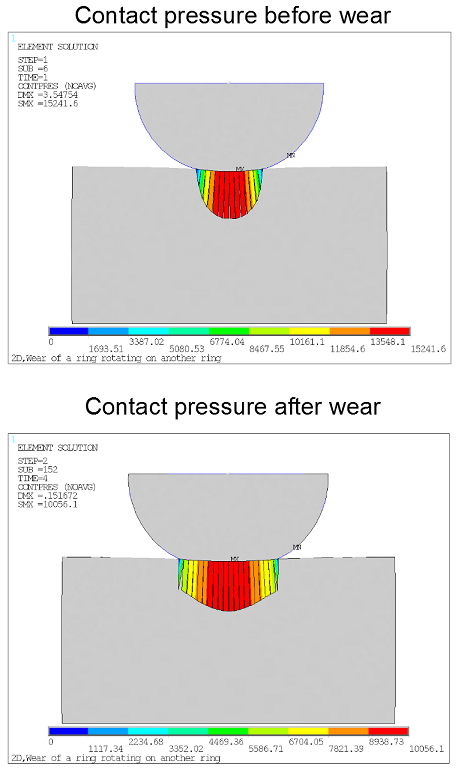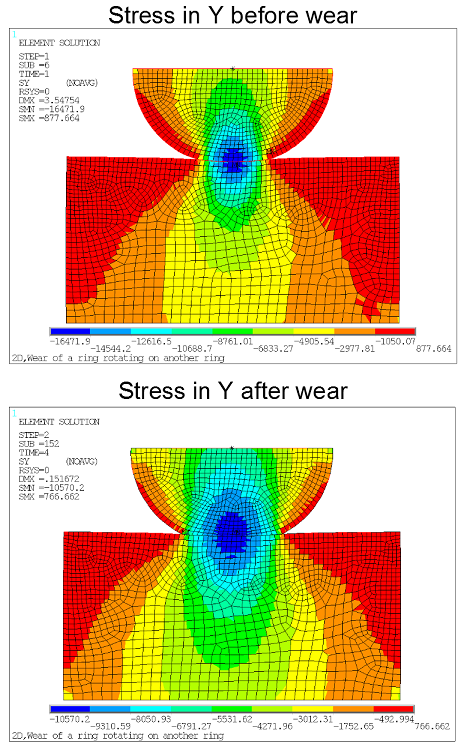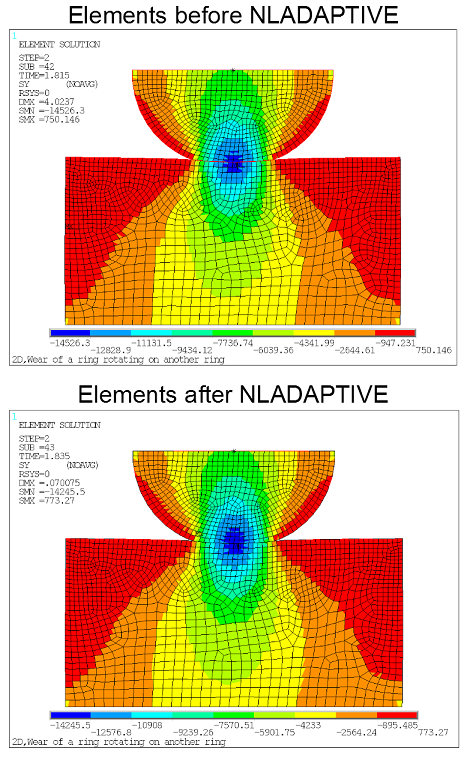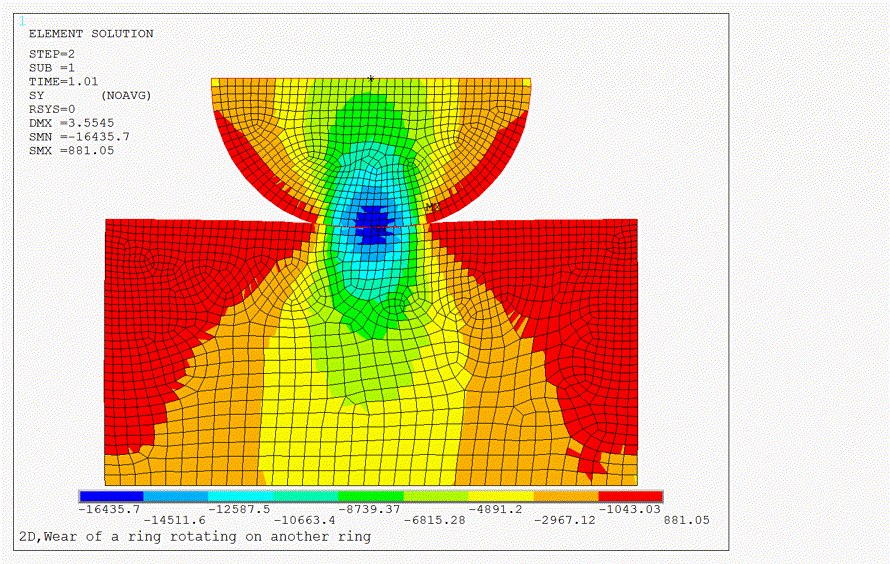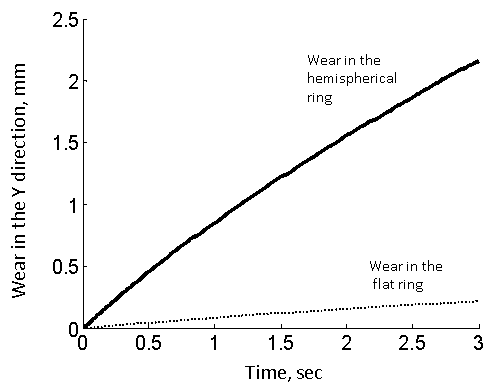The results are analyzed to study the effect of wear on the contact conditions (contact pressure and contact area) and how wear evolves with time under steady-state loading. The following topics are available:
Axisymmetric Contact; Wear on Hemispherical Ring Only
For the axisymmetric contact example, the contact condition is similar to the classical Herzian contact at the end of load step 1 (see figure below). Wear in the hemispherical ring is activated in the second load step. The figure shows the contact pressure at the end of 300,000 rotations (3 seconds) of the hemispherical copper ring over the steel ring.
Since the amount of wear is proportional to the contact pressure, the regions with initially high contact pressure wear more and local curvature is reduced, thereby reducing the contact pressure in those regions. This also leads to increasing area of the ring coming in contact and increases contact pressure in regions that had low contact pressure at the beginning of the wear.
Thus the simulation captures the physical process of wear and results in an increased contact area and more uniform contact pressure; maximum contact pressure goes down with wear and minimum contact pressure goes up with wear. That is, wear makes contact pressure more uniform as shown in the figure below.
Symmetric Contact; Wear on Both Rings
For the symmetric contact example, wear occurs on the top hemispherical ring and on the bottom flat ring. As shown in the figure below, the wear results in similar effects, making contact pressure more uniform on both sides of the contact surfaces and increasing contact area.
The stress in the loading (Y) direction is affected by wear in a similar way. The maximum stress decreases and the minimum stress increases, while the stress gradient is reduced. This is demonstrated in the plots of stress before and after wear for the asymmetric contact example. The element distortions due to wear at the interface are also evident in the figure.
Nonlinear mesh adaptivity improves the mesh quality during wear in this analysis. The specified wear-based criterion is 0.50, which means mesh morphing occurs whenever wear causes the underlying solid element to lose 50 percent of its height.
The axisymmetric contact example undergoes nonlinear mesh adaptivity four times. The figure below shows the stress in the loading direction and the element quality before and after the first nonlinear mesh adaptivity process.
The following animation provides a visualization of the changing stress distribution throughout the second load step, as well as the remeshing of elements due to mesh morphing.
The stress in the loading direction along the contact interface before and after wear is shown in the figure below. Note that the wear makes the stress more uniform.
The figure below shows the evolution of wear in the Y direction at the initial point of contact in the symmetric contact example. The wear occurs more in the hemispherical copper ring than the flat steel ring. This is because the wear coefficient of copper is defined as 10 times that of the steel. Furthermore, it can be seen that the rate of wear is continuously decreasing under the constant external load.



